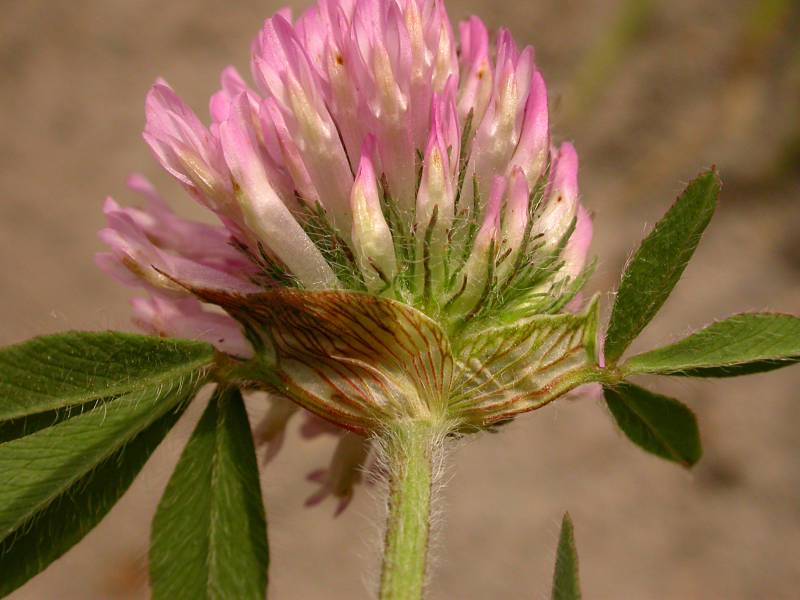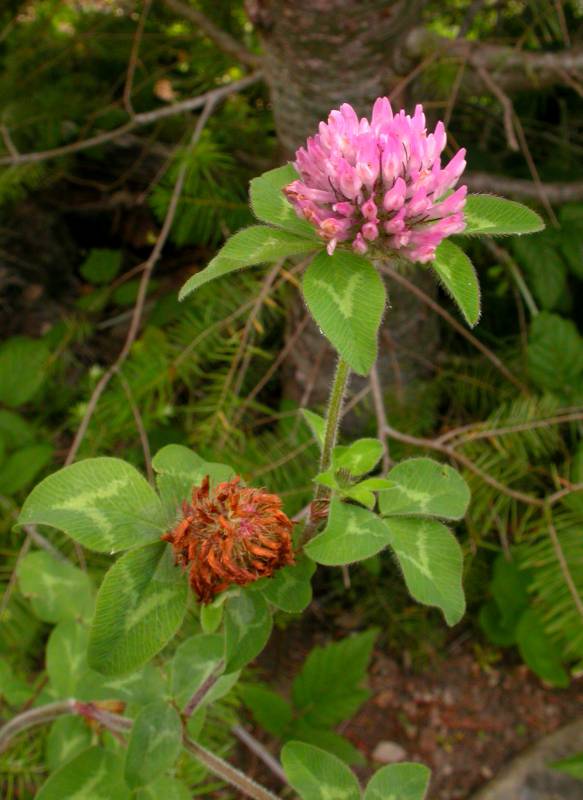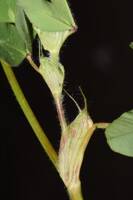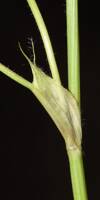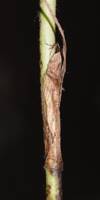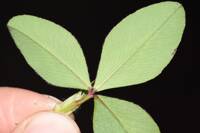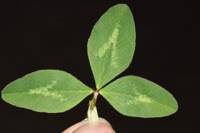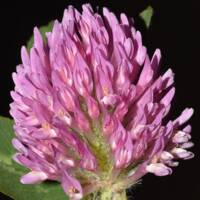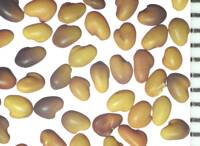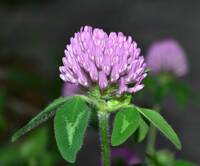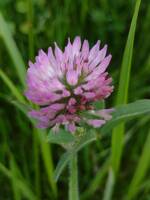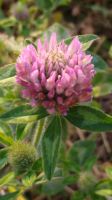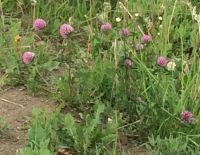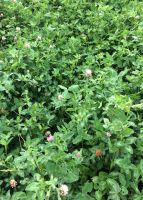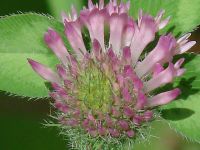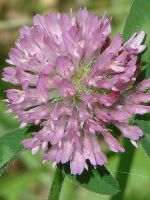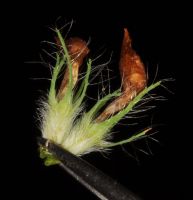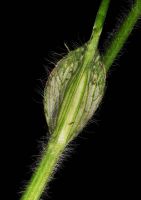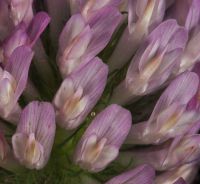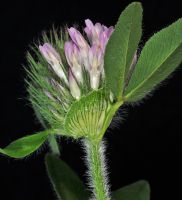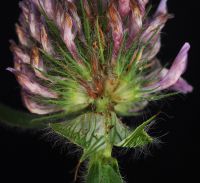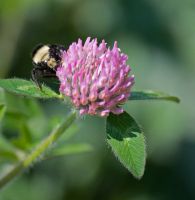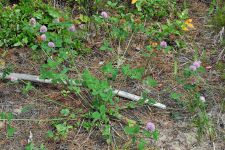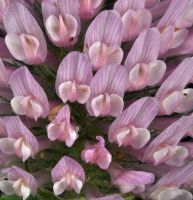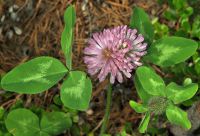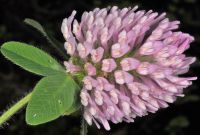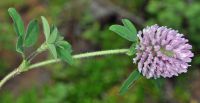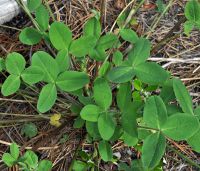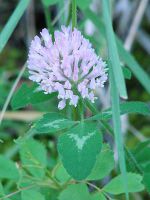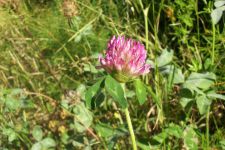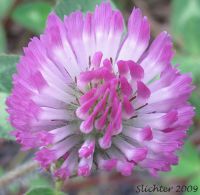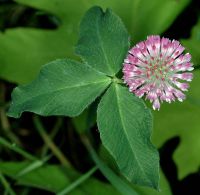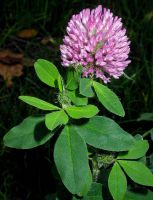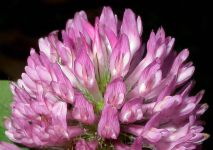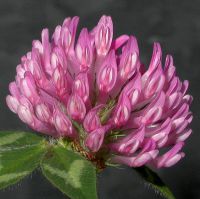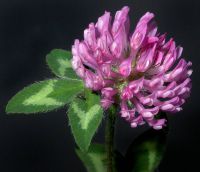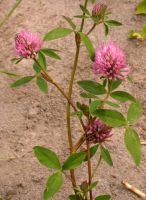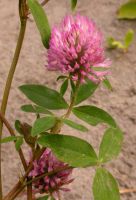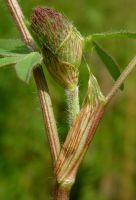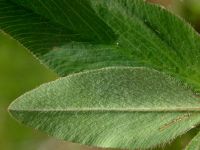Distribution: Widely distributed on both sides of the Cascades crest in Washington; Alaska to California, east across North America to the Atlantic Coast.
Habitat: Escaped from cultivation; found along mountain trails where horses have been used
Flowers: June-August
Origin: Introduced from Europe
Growth Duration: Biennial, Perennial
Conservation Status: Not of concern
Pollination: Bumblebees, bees, butterflies, flies
Soft-hairy, short-lived perennial from a taproot, the several stems 3-10 dm. tall.
Leaves trifoliate, leaflets lanceolate to oblong-obovate, 2-6 cm. long, faintly serrulate; stipules ovate-lanceolate, 1-3 cm. long, with prominent greenish veins.
Heads terminal, sessile or with peduncles shorter than the 2 subtending leaves, 50- to 200-flowered, globose-conic, 2.5-3.5 cm. long and wide; flowers spreading to erect, deep red, 13-20 mm. long; calyx over half as long as the corolla, short-hairy, the 5 teeth with a needle-like tip; the 2 upper teeth about equal to the tube, the 3 lower twice as long.
Pod 2-seeded.
Publication: Sp. Pl. 2: 768. 1753.
Trifolium pratense L. var. sativum (Schreb.) Cincovic
PNW Herbaria: Specimen records of Trifolium pratense in the Consortium of Pacific Northwest Herbaria database
WA Flora Checklist: Trifolium pratense checklist entry
OregonFlora: Trifolium pratense information
E-Flora BC: Trifolium pratense atlas page
CalPhotos: Trifolium pratense photos

